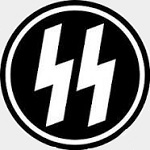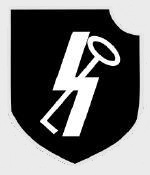Forces of Valor 85036 German Sturmgeschutz III Ausf. G Assault Gun with Schurzen Side Armor - 12.SS Panzer Division, Normandy, 1944 (1:72 Scale)
"If the tank succeeds, then victory follows."
- Major-General Heinz Guderian, "Achtung Panzer!"
 The Sturmgeschutz III (StuG III) assault gun was Germany's most-produced armored fighting vehicle during World War II. It was built on the chassis of the proven Panzer III tank, replacing the turret with an armored, fixed superstructure mounting a more powerful gun. Initially intended as a mobile assault gun for direct-fire support for infantry, the StuG III was continually modified, and much like the later Jagdpanzer, was widely employed as a tank destroyer.
The Sturmgeschutz III (StuG III) assault gun was Germany's most-produced armored fighting vehicle during World War II. It was built on the chassis of the proven Panzer III tank, replacing the turret with an armored, fixed superstructure mounting a more powerful gun. Initially intended as a mobile assault gun for direct-fire support for infantry, the StuG III was continually modified, and much like the later Jagdpanzer, was widely employed as a tank destroyer.
The Sturmgeschutz originated from German experiences in World War I, when it was discovered that, during the offensives on the Western Front, the infantry lacked the means to effectively engage fortifications. The artillery of the time was heavy and not mobile enough to keep up with the advancing infantry to destroy bunkers, pillboxes, and other minor fortifications with direct fire. Although the problem was well known in the German army, it was General Erich von Manstein who is considered the father of the Sturmartillerie ("assault artillery"). This is because the initial proposal was from (then) Colonel Erich von Manstein and submitted to General Ludwig Beck in 1935, suggesting that Sturmartillerie units should be used in a direct-fire support role for infantry divisions. On June 15th, 1936, Daimler-Benz AG received an order to develop an armored infantry support vehicle capable of mounting a 75 mm (2.95 in) calibre artillery piece. The gun mount's fixed, fully integrated casemate superstructure was to allow a limited traverse of a minimum of 25 degrees and provide overhead protection for the crew. The height of the vehicle was not to exceed that of the average soldier.
Daimler-Benz AG used the chassis and running gear of its recently designed Panzer III medium tank as a basis for the new vehicle. Prototype manufacture was passed over to Alkett, which produced five prototypes in 1937 on Panzer III Ausf. B chassis. These prototypes featured a mild steel superstructure and Krupp's short-barrelled, howitzer-like in appearance, 7.5 cm StuK 37 L/24 cannon. Production vehicles with this gun were known as Gepanzerter Selbstfahrlafette fur Sturmgeschutz 7.5 cm Kanone Ausfuhrung A to D (Sd.Kfz.142).
While the StuG was considered self-propelled artillery, it was not initially clear which land combat arm of the German Army would handle the new weapon. The Panzerwaffe (armored corps), the natural user of tracked fighting vehicles, had no resources to spare for the formation of StuG units, and neither did the infantry branch. It was agreed, after a discussion, it would best be employed as part of the artillery arm.
Pictured here is a 1:72 scale diecast replica of a Sturmgeschutz III (StuG III) Ausfuhrung G assault gun that was attached to the 12.SS Panzer Division, then deployed to Normandy during 1944.
Sold Out!
Dimensions:
Length: 3-1/2-inches
Width: 1-1/2-inches
Release Date: June 2012
 Historical Account: "Heroes Road" - Formed from volunteers of the Nazi youth movement, the average soldier in the SS Panzer Division Hitler Jugend was barely 18 years of age when it was constituted in 1944. Led be such veteran field commanders as Kurt Meyer and Fritz Witt, 12.SS Panzer was sent to France in April 1944 where it was stationed south of Paris when the Allies landed in Normandy that June. It was quickly sent north where they first saw action at Caen and then again at Le Capiquer. It withdrew from the front on July 11th, after suffering grievous losses at the hands of Allied units.
Historical Account: "Heroes Road" - Formed from volunteers of the Nazi youth movement, the average soldier in the SS Panzer Division Hitler Jugend was barely 18 years of age when it was constituted in 1944. Led be such veteran field commanders as Kurt Meyer and Fritz Witt, 12.SS Panzer was sent to France in April 1944 where it was stationed south of Paris when the Allies landed in Normandy that June. It was quickly sent north where they first saw action at Caen and then again at Le Capiquer. It withdrew from the front on July 11th, after suffering grievous losses at the hands of Allied units.
It next saw action at Falaise, where it was tasked with keeping the exit to the Falaise pocket open as long as possible so that other German units could withdraw in good order. While it achieved its objective, the Division was almost completely destroyed and had to be re-formed in Germany with new volunteers. The unit fought in the Ardennes during the bitter Battle of the Bulge, and again in Hungary before ending the war in Austria in May 1945.





![USAF General Dynamics F-16C Viper Fighter - 157th Fighter Squadron "Swamp Fox", 169th Fighter Wing, McEntire JNGB, South Carolina, August 2015 [Low-Vis Scheme] (1:72 Scale)](http://cdn4.volusion.store/qh9e9-jdqv9/v/vspfiles/photos/HA3869-1.jpg?v-cache=1740197136)



